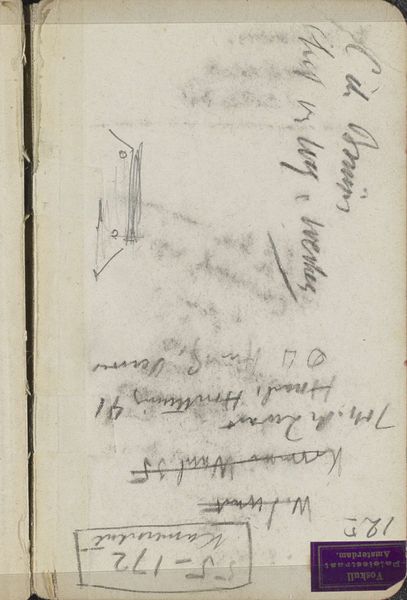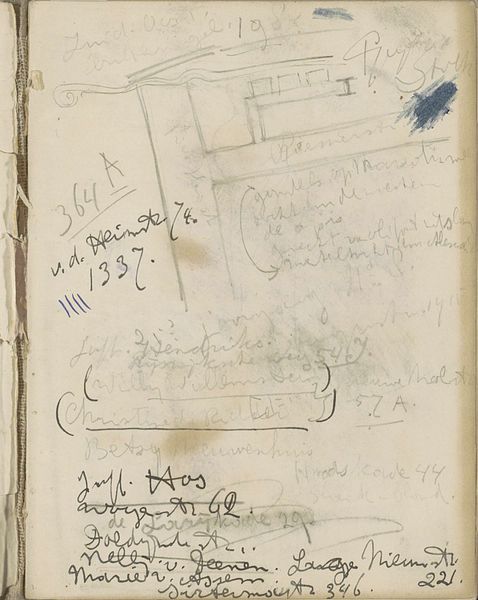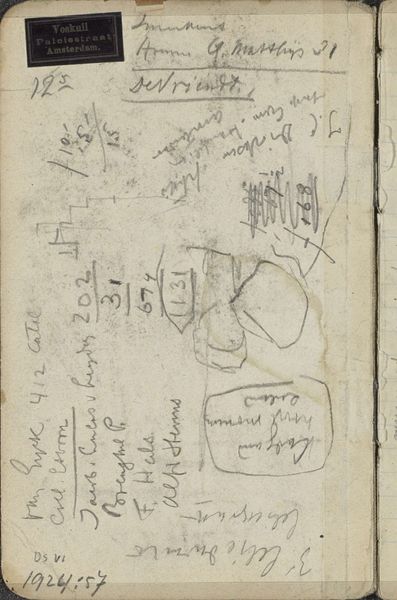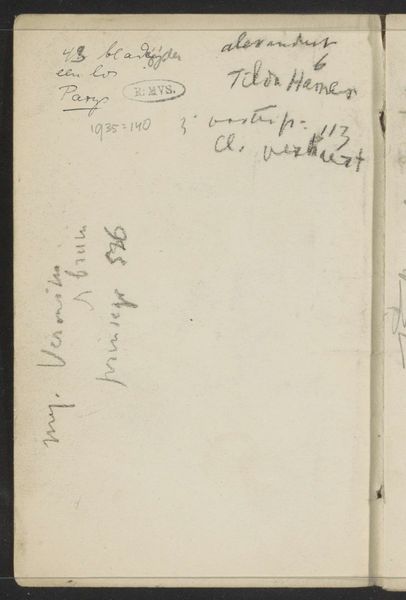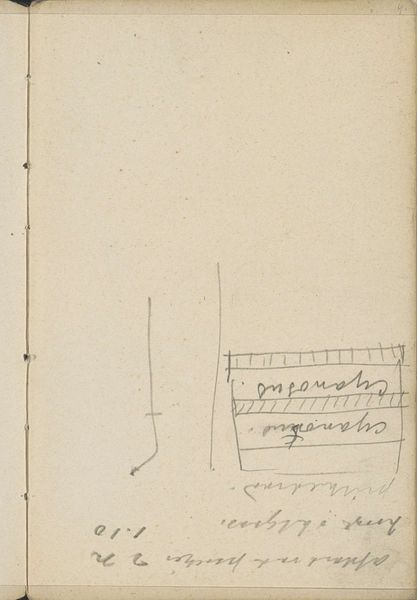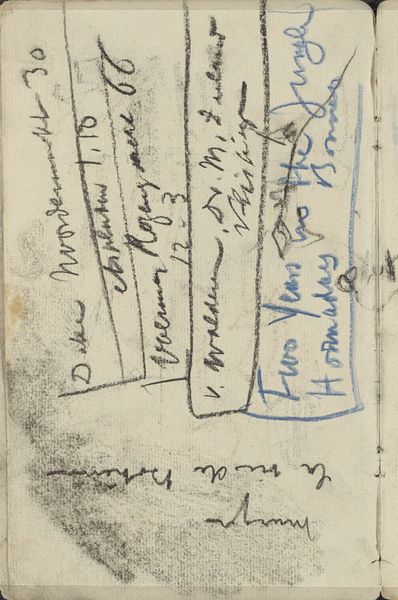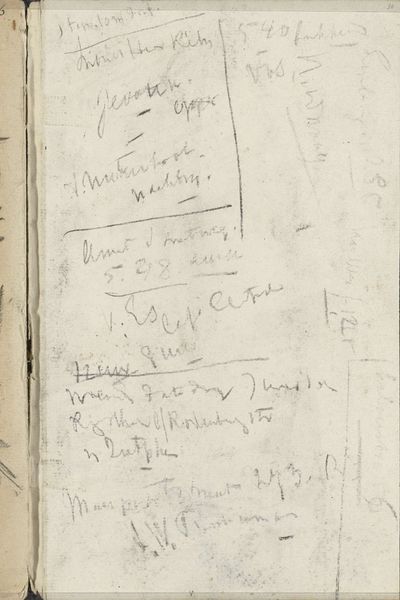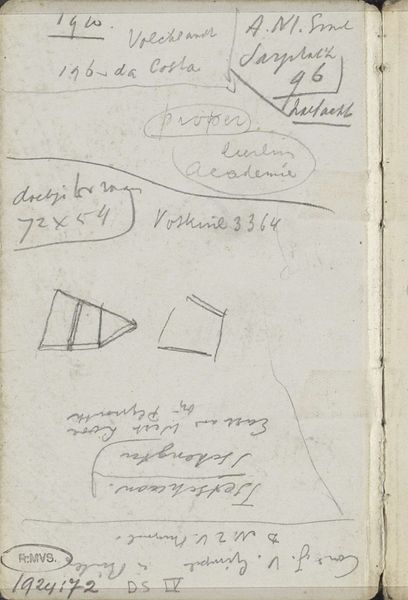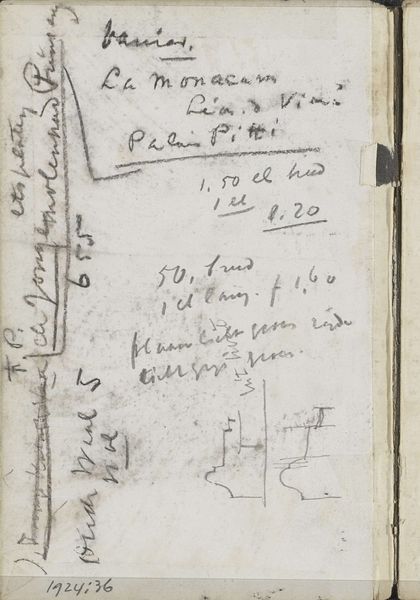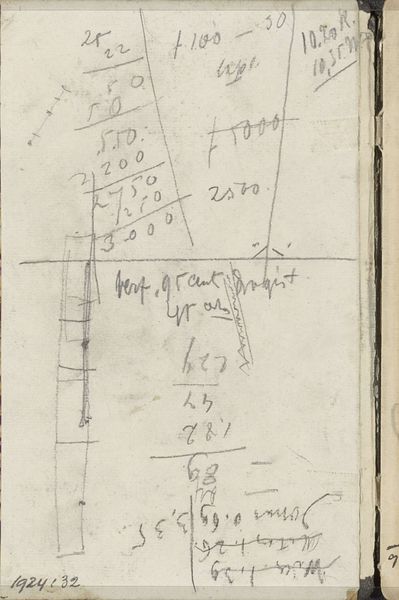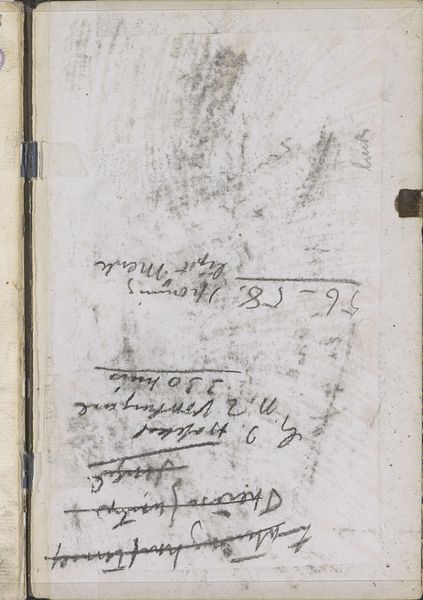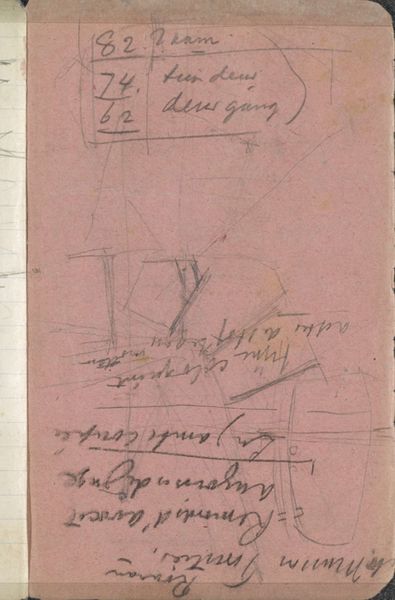
Copyright: Rijks Museum: Open Domain
Curator: Let’s take a look at this work titled "Studieblad" by George Hendrik Breitner. It's from around 1886 to 1903 and the Rijksmuseum holds it. You'll notice that it is rendered in mixed media—primarily graphite and pencil on paper. Editor: My immediate impression is that of a spontaneous outburst. A kind of visual note-taking. I wonder about the role that gender may have played, with artistic freedom and experimentation afforded to men at this time? Curator: Indeed! It’s really interesting to consider this as a working document, not a finished piece, highlighting his exploration of form and composition. Note how the materiality, the cheap paper and readily available pencil, enabled this quickness and volume of study. The social context of artistic training in the late 19th century shaped how Breitner approached his work. Editor: The layered approach feels very modern. It seems he combined sketching, writing, and what appears to be annotations about color or even value, disrupting our notion of landscape and portrait traditions in service of modernism. Was Breitner deliberately subverting those academic norms? Curator: His use of a humble sketchbook aligns with a broader shift towards valuing direct observation and breaking down hierarchies within the art world. The materials he chose played a part in the changing aesthetic landscape that privileged capturing fleeting moments. There are economic realities that also inform his practice: access, cost and portability of materials like these fueled artistic experimentation in a real sense. Editor: I agree. And thinking about the content itself, this image makes me reflect on how much value we assign to ‘finished’ art. It is refreshing to be reminded that true creative expression may be much more loose. This is the unvarnished thought process—so essential to his practice. Curator: It reveals the working processes of artists like Breitner, it is a record of production rather than just a final product. Editor: Precisely, and by showing those material processes to the public we challenge traditional concepts about labor, art making, and value. Curator: It allows one to focus on the creative process itself! Editor: Right, which helps demystify artistic expression itself and allows an opening for marginalized voices. Curator: Seeing such process reveals more to appreciate within finished works themselves.
Comments
No comments
Be the first to comment and join the conversation on the ultimate creative platform.
